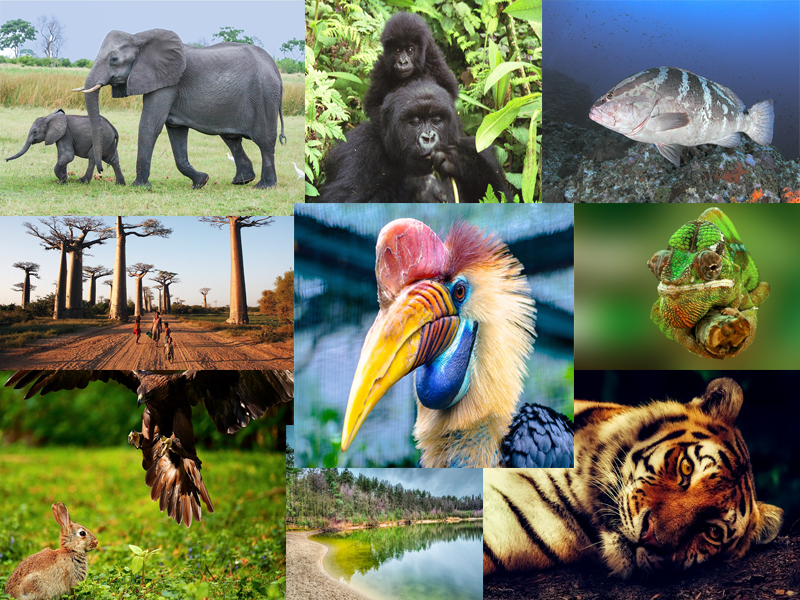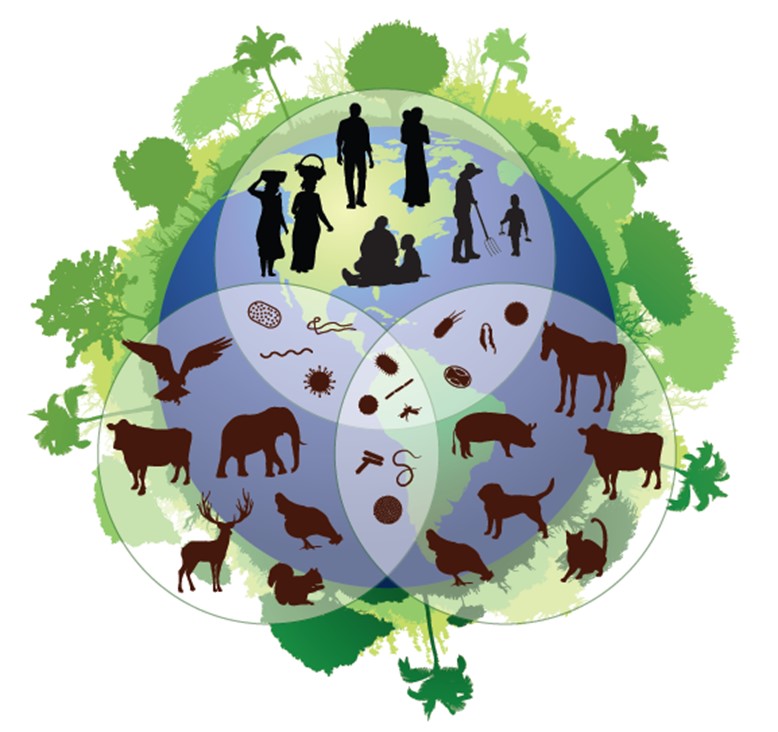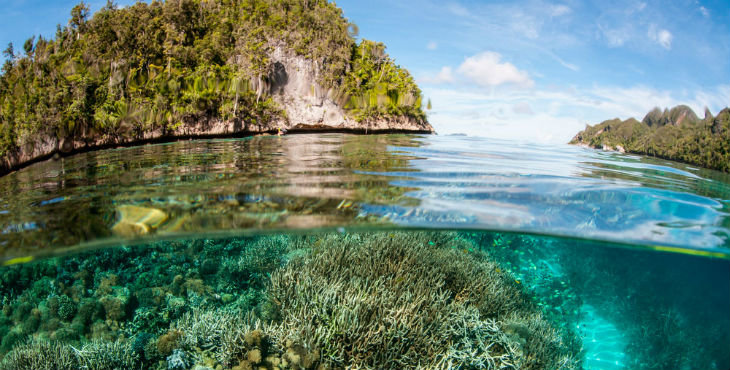The planet earth is characterized by having a great diversity of environments that present beauty and variety, these natural habitats are the recipients of the biodiversity of species of animals, plants and microorganisms that are very important for the conservation of life on earth, in the following article we will learn about the types of biodiversity present on our planet.

Types of Biodiversity
Biodiversity refers to the different forms of life that can exist on earth, including plants, animals and microorganisms. The planet earth is made up of a great variety of ecosystems or biomes that offer a diversity of environments such as jungles, forests, tropics, deserts, savannahs, among others, all of them represent a unique environment rich in natural resources.
Ecosystems can be classified as terrestrial, aquatic and mixed, they are made up of natural patterns that differentiate them from each other. The interaction of the species that compose it together with the natural resources present, contribute a biological richness to the environment, causing them to develop their habitat and evolve as living organisms, all this represents the sustenance of life on planet earth.
Biodiversity plays an important role in the functioning of natural environments, being a participant in the biochemical activities that take place in it, such as the water cycle, nutrients, soil formation, pest control, climate regulation, among others. others. Therefore, the presence of diversity of plant and animal species is of utmost importance for the conservation of the environment.
Biological diversity is considered a complex term that encompasses a lot of content, therefore, a main classification was established based on the different biochemical processes present in ecosystems, which are described below:
Genetic Biodiversity
It is considered as the most basic component of the species, it corresponds to the number of genetic characteristics that an organism can have present. In a few words, it is the variation of genes in the populations of living beings, being the hereditary material that is transmitted from one individual to another individual within the same species. In this way the generations of all living organisms are formed.
Genetic biodiversity is related to the evolution of species, through genes you can find the evolutionary material of living organisms, all this is due to the genetic code, which corresponds to a universal code that stores all biological information regarding generations. past, all this information is influenced by natural habitats.
Genes are responsible for the behavior of each organism, they influence food, construction of their natural habitats, physical differences, among others. For example, giraffes have a long neck that allows them to feed on the leaves that are located in the highest branches of the trees, the development of their long neck is a unique characteristic of their species visualized in their genetic code.
Another outstanding species are the hummingbirds capable of flying with a wing movement of up to 80 beats per second, being the only birds capable of having this type of ability, therefore allowing them to stay in a fixed point for a long time and feed on the flower interior with ease. We can observe that the genetic code of each species will grant unique and distinguishable characteristics with others.
Changes in environments generate variations in genetic diversity, causing alterations in organisms mainly for adaptation and resulting in the loss of the species. Some of man's practices have resulted in drastic changes in nature such as the increase in domestic animals and the globalization of the economy.
Species Biodiversity
The biodiversity of the species corresponds to a great variety of organisms that are present on planet earth. In this case, all those that are located in a specific area, have similar characteristics and are part of the aquatic and terrestrial ecosystems are highlighted. They constitute all those that are classified for related studies, being grouped according to their common biological characteristics.
Species consist of a set of individuals with characteristics in common, representing the same class, category or type. Biological species are a population of individuals such as human beings, animals, plants, minerals, microorganisms, among others; They have very similar characteristics and are able to reproduce with each other. Therefore, they are considered as the basic category in which all living beings are classified.
The evolutionary stages of species is a topic of discussion, due to the complexity of the different processes to which the planet was subjected. According to scientific studies, they highlight that there are currently a total of 12 to 100 million species, highlighting that the biodiversity present in tropical countries such as those located in South America, represent the largest shelter of living organisms on planet earth.
Biodiversity of Ecosystems
Ecosystems represent a community where living beings interact and relate to each other, it is a place made up of biotic factors (plants, animals and microorganisms) and also abiotic factors (water, air currents, nutrients in the soil, among others) constituting the environment. The planet is made up of them, being terrestrial like tropical jungles, forests, savannahs, tundras, deserts, among others; freshwater aquatic such as rivers, lakes, lagoons, among others, also those of salt water such as seas, reefs, among others.
Within the ecosystems there is a very varied biodiversity that interacts with each other along with the other elements within it. They can be considered as a type of biodiversity that is complicated to study, which is why it has been classified into three main groups described below:
- Alpha Diversity
Alpha diversity represents the biodiversity found within a given area, classified as a community where there is complete knowledge of the natural wealth and number of species present. It encompasses all those organisms that coexist within a natural habitat and are recognized for being found in families or through a taxonomic genus.
- Beta Diversity
In the case of beta diversity, it encompasses all those ecological relationships that exist within the species that interact with the ecosystem, it also encompasses the interaction of the same ecosystem in the face of the different environmental gradients present. It allows to have knowledge of the number of species present within their habitat and also to know all the environmental changes to which they are subjected.
- Gamma Diversity
Gamma diversity is related to the description of the total richness possessed by species within an ecosystem, established through comparative scales. Being grouped between various environments and encompassing the statistics related to them.
Loss and Care of Biodiversity
Biological diversity represents all the biological wealth that can be observed on planet earth, coming to form everything related to life and providing a wide genetic material that originates multiple species. Highlighting the fact that the natural environments in which they live and develop cannot be excluded, because they influence the evolution of each of the organisms.
There are three types of biodiversity described above, each of them are linked to each other, interacting in a cycle that bases the life and survival of natural species. Currently, a great loss of biodiversity has been observed in a massive and accelerated way; covering all three levels, as in the case of genetic biodiversity by destroying genetic species and reducing their reproduction; biodiversity of species by extinguishing classes of organisms and the interdependence of species and biodiversity of ecosystems breaking the balance with their natural habitat due to overexploitation of resources.
Through the Convention on Biological Diversity of the year 1992, focused on the "Conservation of biological diversity is of interest to all humanity", it consisted of a forum to inform the countries of the world of the current condition of natural species, assume the challenge of investing in scientific research that supports an ecological advance and also training professional technical personnel who are specialized in the subject of biodiversity.
Through all the discussions, the elaboration of laws and agreements oriented towards the protection and conservation of biodiversity was considered, establishing global policies with the purpose of stimulating the care of natural species and generating the necessary culture for the conservation of species and ecosystems of the entire planet earth.
In this way they concluded that for the conservation of biodiversity it is necessary to reduce human activities, mainly those that can be harmful, as well as excessive tillage, excessive logging, poaching, in others; as well as the importance of making known the information of local and global biological species, evaluating the panoramas on the current condition of living organisms that are in danger.
The objective of all these decisions is the conservation of biodiversity, involved in supporting the sustainable development of all biological resources, thus avoiding the reduction of the variety of genes, species and ecosystems that enrich planet earth.
We hope this article has been helpful, we leave you others that will surely interest you:
Environment Effect investigation


